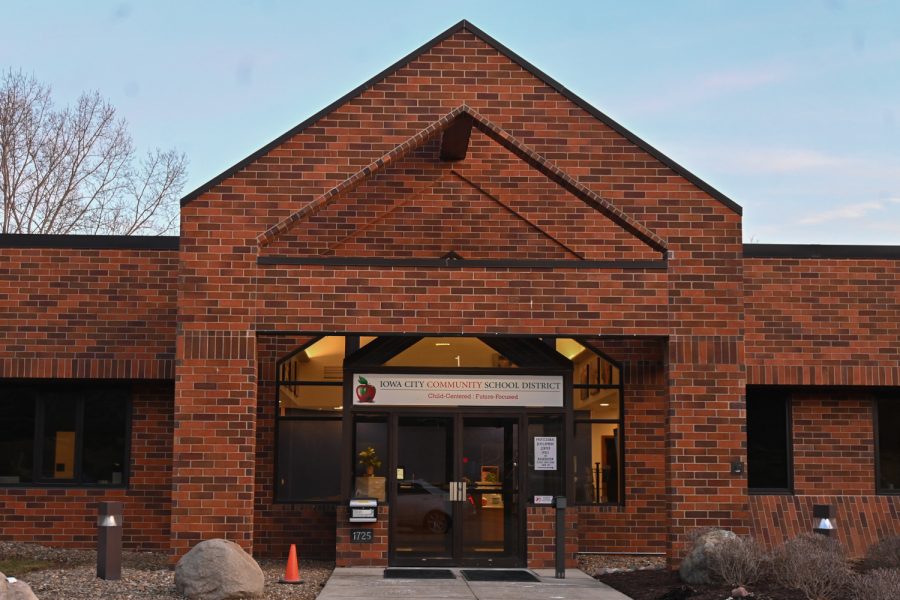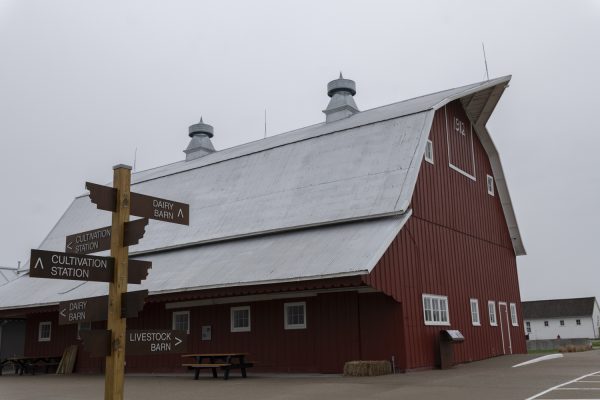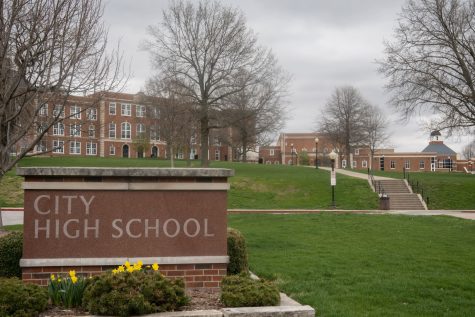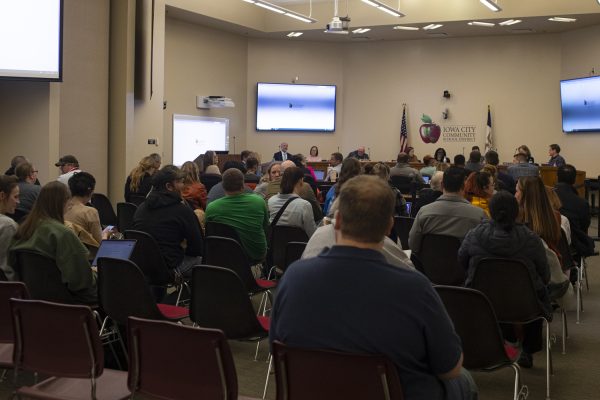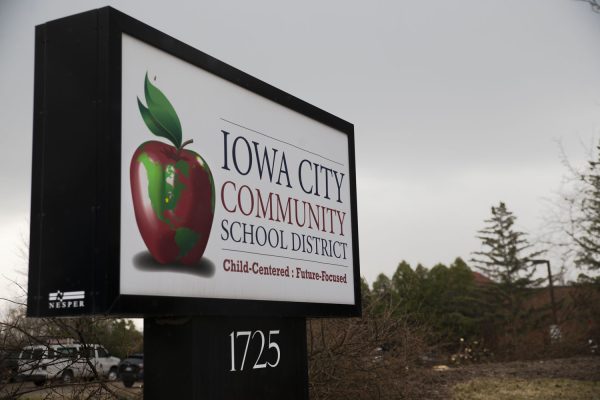Iowa City Community School District leaders say funding increase for K-12 schools isn’t enough
In February, Iowa Gov. Kim Reynolds signed a bill raising Iowa K-12 public school funding by 2.5 percent. Iowa City Community School District Board leaders say they needed 5 percent.
The Iowa City Community School District is seen on Wednesday, March 3, 2022.
March 2, 2022
Iowa City Community School District leaders say the 2.5 percent increase to public schools signed into law by Gov. Kim Reynolds this year is not the amount they were hoping for.
The funding increase will create $159 million in new funding for Iowa’s public schools. Iowa City Community School District board member J.P. Claussen said the increase doesn’t keep up with the high level of inflation rates Iowa has seen this year.
“We’re having record-setting inflation right now, and I think that’s something people don’t recognize, is districts have to keep up with that,” Claussen said. “If the electricity costs go up, we don’t have a choice, we have to pay that. And obviously, we also need to pay people so their salaries are able to keep up with inflation.”
Claussen said most of the funding increase will be put toward matching the rising inflation rates and retaining the salaries of faculty at Iowa City Community School District schools, as opposed to adding new programs or resources.
“Eighty-five percent of our money goes to people, and so anytime we want to add a new program, which would require more people, we’ve got to take it from somewhere else,” he said. “That’s the situation we’ve been in, really for the past 10 years.”
Public schools have been underfunded and not kept up with inflation for over a decade, Claussen said. This leaves the Iowa City Community School District to be satisfied with what they get funding wise, because it could potentially be lower.
“We’re kind of trained to be happy with what we get like, ‘Oh, at least it’s not 2.25 [percent], it’s 2.5,’ which, that might seem like a small number, but for a district the size of Iowa City, that is a significant amount of money,” he said.
Claussen said the lack of funding has made it difficult for the Iowa City Community School district to maintain the things they are already doing, let alone add anything extra like more career technical education or opportunities.
The school district would have liked to see a 5 percent increase, Claussen said. He said it would allow the district to keep up with inflation as well as make up for some of the deficits they have experienced over the past 10 years.
“Kids are coming in with more needs than ever before,” Claussen said. “The learning gaps are only getting worse, especially since COVID, and so to try to make ground on any of that stuff, we need more people in the system. We have a hard time hiring peer educators.”
The 5 percent increase would also help them retain staff and potentially look at expanding programs.
Les Finger, Iowa City Community School District chief financial officer, said an increase of 5 percent would have been ideal for the school district. The school district, along with the Urban Education Network of Iowa, both asked for increases in the four to five percent range, he said.
Finger said that the funding is essential in combating inflation, especially as schools continue to recover from COVID-19.
“Even though [schools] have the federal monies, those aren’t going to last for more than another year. It was really the hope that we would get something more than two and a half percent, especially given how well stocked the Iowa fund balances are in Des Moines, we were hoping that more of that would go to schools as opposed to tax cuts,” he said.
Though the 2.5 percent increase is not what Iowa City schools wanted, it is the largest increase in several years, Finger said.
Rep. Dustin Hite, R-New Sharon, chair of the House Education Committee, said he thinks the increased amount is a “good, solid number” and everyone will always want more in government funding.
“What you have to do, is you kind of got to look over the past 10 years where we’ve invested around a billion [new] dollars into K-12 education,” Hite said. “When you look at all of that, you look at where we’re going, I think certainly, I think it’s a good place to be.”
When deciding the funding budget, the government has to look at everything that goes into the budget and make a decision, Hite said.
“Everybody always wants more money, but when we’re deciding how much to fund, whether it’s K-12, whether it’s the University of Iowa, whether it’s our prisons, or roads, whatever, we’ve got to look at it in the big picture,” Hite said.
Hite said his goal for education is to keep giving the schools the funding and resources they need to educate Iowa students.
“We usually look at [the funding] every year as it comes in, because our revenues change every year, our funding priorities and other areas change every year,” Hite said. “I wouldn’t say that we look at it ‘well five years down the road, we want to be here’. I think we look at it on a year-to-year basis.”
The funding also depends on the events of the past year and what the government expects to spend money on, Hite said.
“A lot of what we do is almost out of our discretion. A big chunk of our budget, in addition to being education, which consumes about 57 percent of our state budget,” Hite said. “We have Medicaid funding, and that’s kind of a ‘We have to fund that we don’t really have much of a choice.’”



